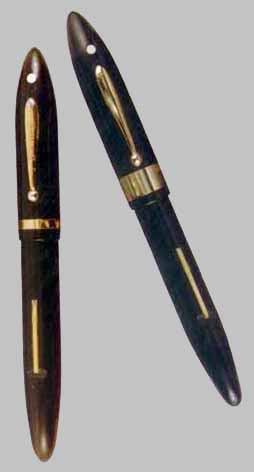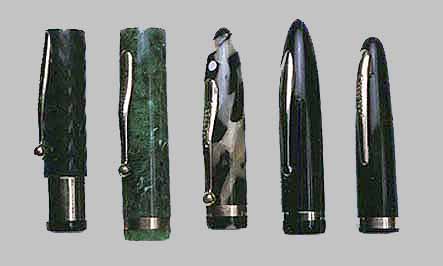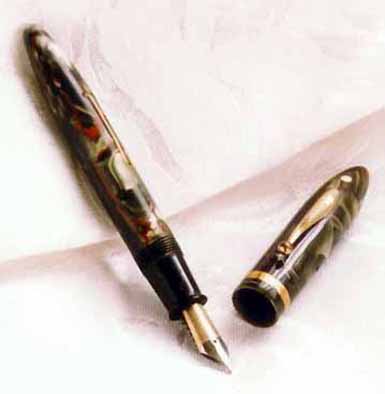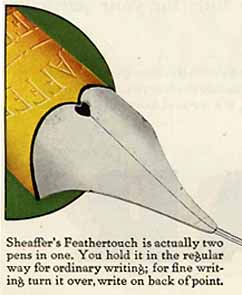
Left: Full Size Balance (1930-1935)
Right: Full Size Balance, 14K Clip & Band (1930-1935)
As with most all vintage pens, bigger is better, at least from the conventional value point of view. The Oversize models in good condition can range from $200 or so in plain black, all the way to $700 for one of the rarer colors. A standard or Full Size model, on the other hand will likely run about $100 to maybe $250. You can see that there is quite a premium placed on the larger pens. As with any vintage pen, condition is everything in terms of value, some of the plastics were more prone to cracks than others. Unfortunately, some of the most desirable colors, such as the Red Veined Gray Pearl, are especially prone to cap lip cracks.
In order of desirability, the colors would range as follows: Black are most common, followed by (it seems to me) the Black and Pearl, then the Jade Green, then Marine Green Marble, and finally, the Red Veined Gray Pearl. There is also a Blue and Black marble, which is very rare, and normally only found in the smaller pens. I have never heard of an OS in this color, and can only imagine what it would fetch, considering that the smaller ones will bring anywhere from five to ten times the going rate for a similarly sized model in a common color!
As with almost all colored plastics from this time period, the Sheaffer balance pens are subject to various degrees of discoloration. The biggest sufferers are the Black and Pearl, and the Jade Green, it can be very difficult to find either with truly perfect color, with good color adding considerably to the price tag.
In 1931 the Autograph pens were introduced. They were made with solid 14K gold clips and capbands, these parts will be marked 14K. Usually the band is wider than the regular band, designed for engraving the initials or signature of the owner. Obviously these pens will also bring a premium over a standard model.
In 1933 a new shorter clip, with a middle hump and a small rounder ball, was adopted. It was tapered to a blunt
point at the upper end with mounting ears and was imprinted "SHEAFFER'S". This clip was used until 1935.


